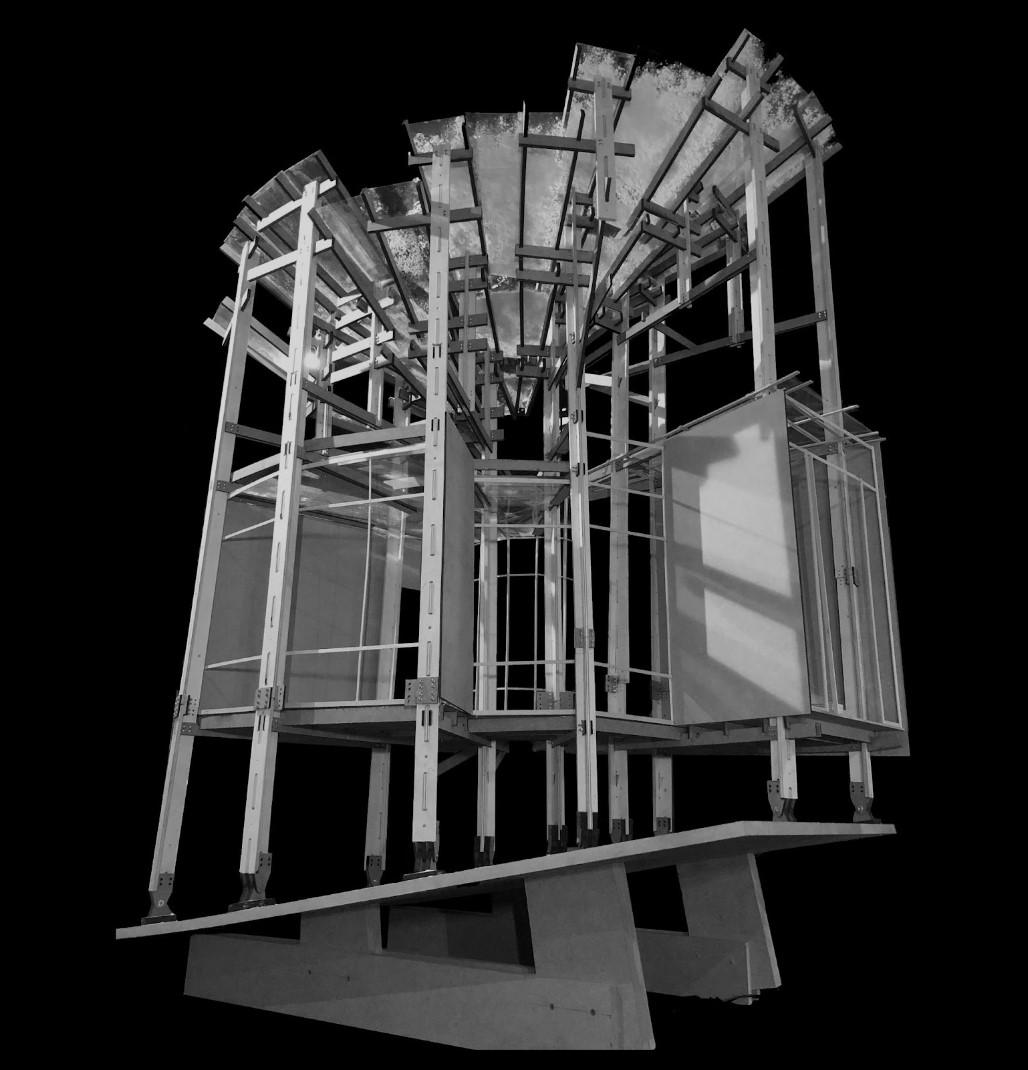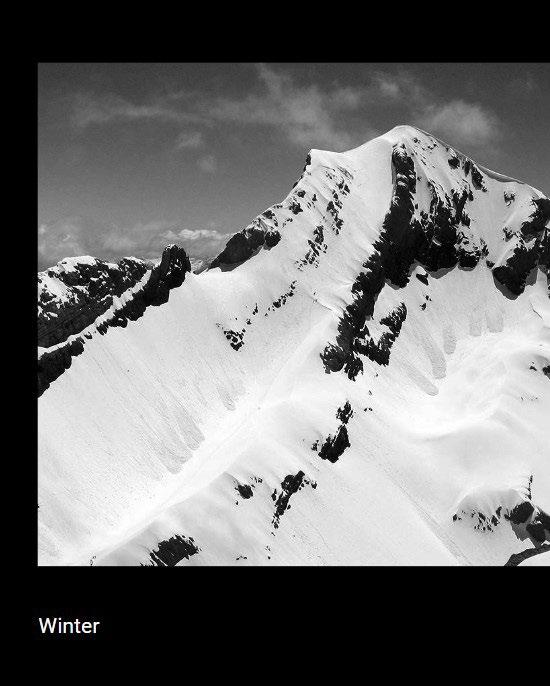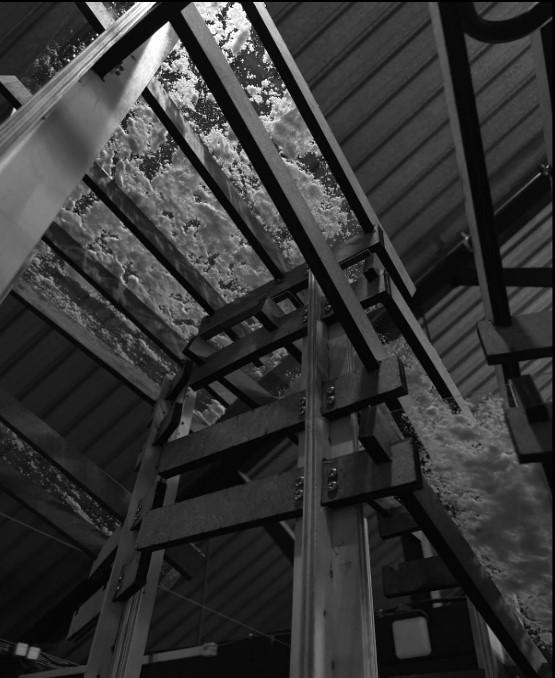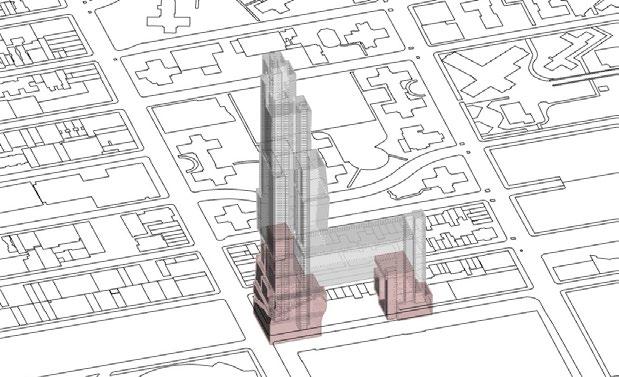
1 minute read
Snow Sanctuary
Self Sufficient Buildings
Senior Faculty: Raimund Krenmueller and Edouard Cabay
Advertisement
Small Group Project
Completed 2022
Snow Sanctuary is a cabin located near the peak of Monte Perdido, a mountain in the Spanish side of the Pyrenees mountain range. In order to experiment with the volumetric qualities of snow, an electric grater was used to help us better understand the qualities of accumulation and collection of a light and fluffy substance.
On the Monte Perdido site, snow lasts for the majority of the year from September until June, with winter highs at 1 meter of snow, midseason months peaking at 25cm a day, and summer months averaging 1 cm a day. Snow, when accumulated, begins with a fluffy consistency when fresh, and as time pases it melts and refreezes. This process creates a compact layer of snow, allowing it to stay solid for a longer time as temperature rises.
The cabin design creates a platform to view this phenomenon of snow. With the name Snow Sanctuary, this cabin has a transparent roof structure that allows residents to watch this snow-related phenomenon in real time by looking up. This accumulation of snow will begin to obscure the view of the sun on the roof panels. The darkness will concentrate in the middle of the cabin where the courtyard is located and fan out to the rest of the spaces as snow begins to rest on the higher roof pitches.
Snow Sanctuary’s design includes a series of glass roofs at three different angles that are arrayed around the cabin in a circular manner. This design would help cluster the phenomenon of snow in a central courtyard, exaggerating the accumulation of snow, and displaying it to all parts of the cabin.
The glass roofs are elevated above the interior space to allow more light to penetrate into the cabin. This highlights the snow phenomenon by allowing the viewer to get a better view of the snow accumulation and shadow play that it creates inside.












